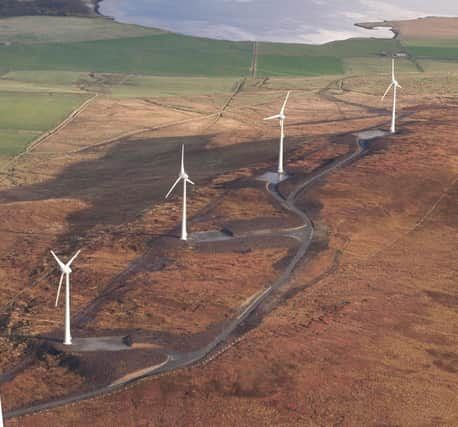Three wind farm sites planned for Orkney


The three planning applications, each for six turbines of 150 metres in height, are currently with the Scottish Government.
If the sites are found to be suitable, the projects could generate significant income and community benefit, helping to fund local services and providing a substantial community benefit scheme.
Crucially, the projects will also help Orkney meet Ofgem’s 135MW “needs case” for a new transmission link between Orkney and the mainland.
This link will substantially support the islands’ renewables industry, and help to meet net-zero targets in Scotland, Orkney and the UK.
In terms of a green recovery, a new electricity transmission link could be worth at least £371 million to the Orkney economy, according to an economic study. This would rise to £807m if the wave and tidal energy industry makes use of the cable too.
For Scotland the figures are a minimum of £606m, rising to up to £1.48 billion.
The independent economic report – put together by specialists at global professional services firm GHD – also found that the three wind farms under Orkney’s Community Wind Farm Project are vital in securing a cable for the archipelago.
The future is blue
In the midst of the pandemic and climate emergency, organisations in Orkney are using their mandate for innovating renewable solutions to lead the UK’s green recovery and transition to net-zero.
For Aquatera Group – an environmental and renewable energy consultancy operating globally from its Orkney base – a core part of this work has focused on demonstrating the opportunities of Scotland’s Blue Economy (BE) for small businesses.
The Scottish Enterprise-funded Blue Economy Cluster Builder, led by Aquatera and funded through the European Regional Development Fund, raises awareness of the benefits of the BE small and mid-size enterprises (SMEs).
The programme enables these organisations to take advantage of new opportunities to grow and diversify their work and to boost innovation, both in Scotland and internationally. Scotland has around 19,000 km of coastline and 462,263 km2 of ocean area – approximately six times the size of Scotland’s land area. This represents 61 per cent of UK waters and 10 per cent of Europe’s coastline.
In 2010, BE’s global output was estimated at US$1.5 trillion in gross value added and this is projected to increase to US$3tn in 2030.
In Scotland, there are currently about 84,500 jobs within the top nine sectors of the BE. This is predicted to grow to 99,000 jobs by 2030.
For the industry in Scotland to continue as a leading example for sustainability, excellence and growth in the international BE, there is broad recognition that ambitious, co-ordinated action that prioritises the management and protection of our seas and oceans is required.
The three-year Cluster Builder, a tool for increasing economic opportunity among a group of interconnected industries, provides an inclusive and free-of-charge service to ensure that Scotland’s SMEs are positioned to gain the optimum share of market growth and compete with other international BEs.
It also aims to create a self-sustaining service beyond the three-year period. The programme focuses on a series of events – one-to-one SME support, and knowledge sharing, signposting and transfer.
The Blue Economy Cluster Builder is funded through the European Regional Development Fund, Investing in a Smart, Sustainable and Inclusive Future.
Headline figures- Orkney has more than 60 years of renewable energy innovation- Annual renewable electricity generation is over 100 per cent of demand – Orkney has been a net-exporter since 2013- 10 per cent of homes on Orkney have micro-generation – the statistic is 2.8 per cent for the UK- Orkney has more than 1,000 individual energy generators and technology investorsRENEWABLE energy- Orkney is home to the highest concentration of small and micro-wind turbines in the UK – more than 700 domestic scale generators- It is estimated that Orkney’s micro-wind turbines have saved in excess of 50,000 tonnes of CO2 emissions to date- 12 large-scale wind turbines, six community wind turbines- NM92 at Burgar Hill became the first single UK turbine to generate 100,000,000 kWh (100 GWh) of electricity to national grid in April 2005- More marine energy tech has been tested at Orkney’s EMEC than anywhere else in the world. It has hosted 21 wave and tidal energy clients (with 34 marine energy devices), for 11 countries.- Orkney has 12 times more domestic renewable heat incentive installations per home than the UK averageEconomic impact- Orkney has 300 jobs related to renewables- An economic impact assessment calculated EMEC added £306 million GVA to the UK economy between 2003 and 2019.- A new electricity transmission link to Orkney could be worth up to £606m to the Scottish economy, rising to £1.48 billion if the wave and tidal energy industry also makes use of the cable.
Find out more at Orkney Islands Council